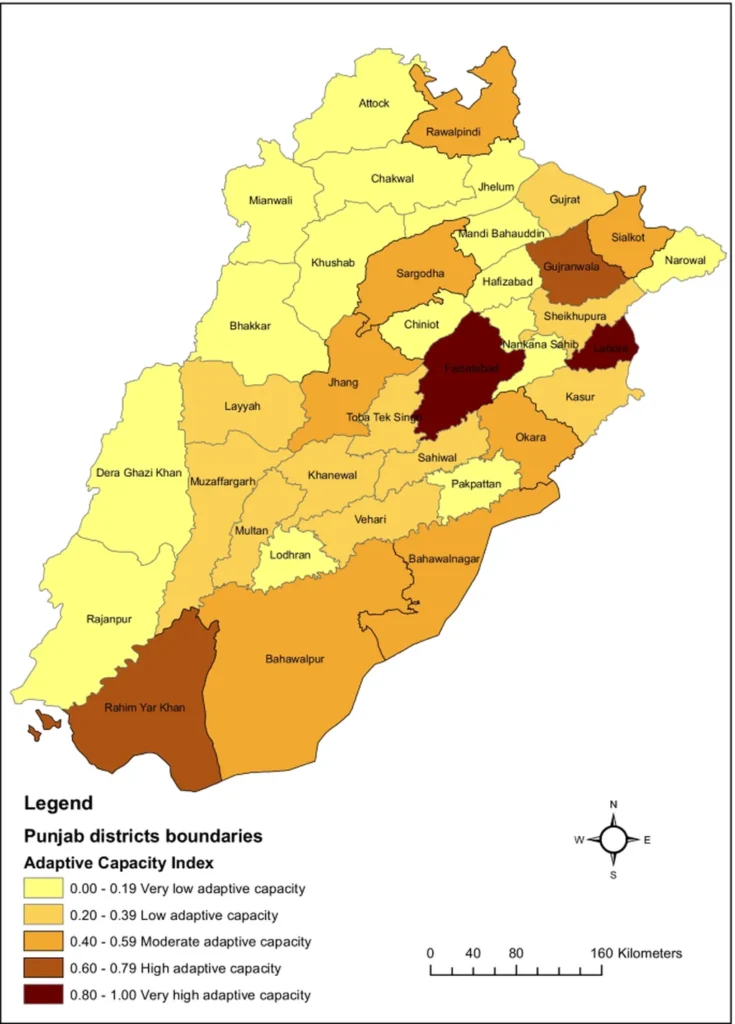In the heart of Punjab’s agrarian landscape, a silent demographic shift is underway, one that could reshape the region’s ecological and agricultural dynamics. The blue bull, or nilgai as it’s known locally, is thriving, and a recent study published in the journal *Scientific Reports* (translated from Hindi) has shed light on the population ecology and herd dynamics of this largest Asian antelope species in the district of Ludhiana. The research, led by Kiran Rani from the Department of Zoology at Punjab Agricultural University, offers critical insights that could influence conservation policies, resource management, and human-wildlife conflict mitigation strategies.
The study, conducted over a year with fortnightly visits to 30 clusters, reveals that the blue bull population density and encounter rates vary significantly across the district, ranging from 0.318 to 5.79 animals per square kilometer and 0.145 to 1.316 animals per kilometer respectively. “The mapping of population density highlights critical spots of animal density,” Rani explains, “and understanding this distribution is pivotal for effective resource management and conflict mitigation.”
The research also uncovers a skewed sex ratio, with adult females outnumbering adult males by a ratio of 1:0.18, suggesting a population primed for growth. This finding, coupled with observations of calving events peaking during the pre-winter season, paints a picture of a species that is not just surviving but potentially thriving in the agrarian landscape.
One of the most striking findings is the shift in herd composition and group dynamics across seasons. Non-harem groups were predominantly observed during the summer and monsoon, while harem groups were prevalent throughout the rest of the year, indicating a long breeding season. “This seasonal variation in herd composition and group dynamics is a crucial factor to consider when devising conservation and management strategies,” Rani notes.
The study marks the first comprehensive exploration of blue bull population ecology in agrarian land in Punjab. Its findings could have significant implications for the energy sector, particularly for companies involved in renewable energy projects. As Punjab aims to expand its solar and wind energy capacity, understanding the ecological dynamics of the region becomes crucial. The blue bull, as a keystone species, plays a significant role in maintaining the ecological balance. Therefore, any large-scale infrastructure development must consider the potential impact on their habitats and migration routes.
Moreover, the study’s insights into the blue bull’s population dynamics and habitat preferences can aid in designing more effective conservation strategies. By focusing on areas with high blue bull density, particularly during critical breeding seasons, policymakers can prevent overpopulation and mitigate human-animal conflicts. “Strategies should be developed to ensure the preservation of their natural habitat,” Rani emphasizes, “as this is key to maintaining the ecological balance and preventing potential conflicts.”
The research also underscores the importance of understanding the interplay between wildlife and agriculture. As the blue bull population continues to grow, so does the potential for crop raids and other forms of human-wildlife conflict. By integrating the study’s findings into agricultural planning and management, farmers and policymakers can proactively address these challenges.
In the broader context, this study serves as a reminder of the intricate web of life and the delicate balance that exists within our ecosystems. As we strive to meet the energy demands of a growing population, we must also ensure that our actions do not disrupt this balance. The blue bull, with its unique ecological role and cultural significance, serves as a poignant symbol of this delicate interplay between human progress and ecological preservation.
As Punjab continues to evolve, so too must our understanding of the natural world that surrounds us. The blue bull, once a silent sentinel of the agrarian landscape, is now a beacon, guiding us towards a more harmonious coexistence with nature. And as we navigate the complexities of the 21st century, let us heed its call, for in its story lies a lesson for us all.

